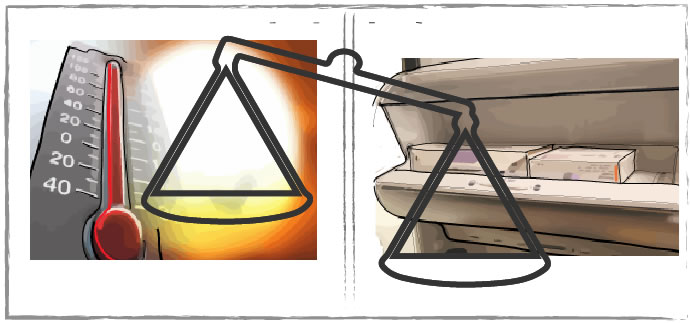Physical barriers to insulin effectiveness

Page 5 of 6
Temperature and insulin
Heat can increase the circulation of subcutaneous blood close to the skin surface, in an attempt to cool the body by sweating. As a result, insulin injected when an individual has a body temperature higher than usual may result in more rapid insulin absorption. Conversely, cold can delay insulin absorption, by reducing subcutaneous circulation, causing vasoconstriction and the subsequent rate of insulin absorption.
People who are travelling to warmer or colder countries should be made aware of this.


